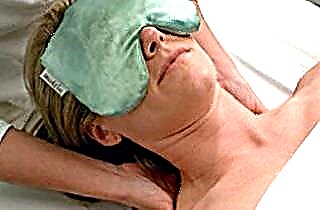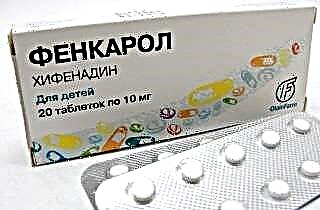Often on specialized medical forums, people ask why the earlobe is swollen and itchy, what to do, where to go. It is not easy to answer these questions. The organ of hearing, due to its location, is often involved in various diseases of the human body. Specific diseases that are characteristic only of the earlobe do not exist.
Allergic reactions
 Every fifth inhabitant of the planet has a negative body response to various allergens. Due to the constant increase in the amount of active substances and a decrease in the general level of immunity of the population, allergic reactions are increasingly common, both in adults and in children. They can manifest themselves on the organs of hearing in this way:
Every fifth inhabitant of the planet has a negative body response to various allergens. Due to the constant increase in the amount of active substances and a decrease in the general level of immunity of the population, allergic reactions are increasingly common, both in adults and in children. They can manifest themselves on the organs of hearing in this way:
- swelling;
- rashes;
- itching;
- sometimes a rise in temperature.
Many traditional factors, such as:
- pollen of plants;
- animal hair;
- ticks and other insects;
- house dust;
- fungi and mold;
- cigarette smoke;
- some food.
However, if the earlobe is swollen, reddened and sore, then it is quite possible that substances contained in medicines or in household chemicals served as the impetus.
 Possible reasons for the reaction:
Possible reasons for the reaction:
- phosphate-containing powders and detergents;
- bleaching agents;
- cosmetics for body and face care, hair dye;
- antibiotics;
- benzophenones and benzocaine, etc.
During the period of exacerbation, the patient suffers from very severe itching of the auditory organs, which can be constant or periodic. In this case, the affected areas become painful.
The body's reaction can be accompanied by allergic otitis media, which is external or middle, most often asymptomatic. In children, the body's response (diathesis) occurs to breast milk or complementary foods containing allergenic substances. If the child's earlobe is swollen, then it is necessary to transfer him to a dietary diet in order to empirically determine the products that are not suitable for him.
To diagnose the causes of allergies in an adult, he needs to see a specialist, pass provocative tests, smears and skin tests, as well as a blood test. For an effective cure, contact with the allergen must be removed, therefore, a strict diet is introduced that excludes spicy, smoked, sweet foods, and alcohol.
Also, the doctor prescribes antibiotics and antihistamines in tablets (suprastin, diazolin, loratadine). Ointments and special solutions are applied topically. Sometimes the doctor may advise you to take vitamin complexes, immunomodulators or sedatives for easier itching.
Dermatological problems
 Often, swelling on the earlobe can be caused by skin lesions. If swelling, itching, and peeling persist within a few days, you can consult an otolaryngologist or dermatologist. The most common causes of these signs are inflammatory or fungal diseases.
Often, swelling on the earlobe can be caused by skin lesions. If swelling, itching, and peeling persist within a few days, you can consult an otolaryngologist or dermatologist. The most common causes of these signs are inflammatory or fungal diseases.
- Eczema. Chronic skin disease of an inflammatory nature, which can occur as a result of severe stress, allergies or ailments of internal organs, infection during trauma. The mild (abortive) form is provoked by a sore throat or ARVI, accompanied by the appearance of small reddish scaly and itchy spots. Starting in the ear canal, it tends to spread to the surrounding skin. Therapy - washing with furacilin solution and 1% resorcinol solution, compresses with silver nitrate solution, ichthyol ointment or lotions using lead water.
 Allergic dermatitis. Its appearance is facilitated by intestinal dysbiosis and chronic diseases of internal organs. It is characterized by severe itching, redness of the skin and the appearance of blisters. The patient is constantly combing the sore spot. In addition to specific treatment (antihistamine tablets, antimicrobial ointments), sorbents (activated carbon) and bifidobacteria are also used to normalize the intestines. Be sure to follow a diet.
Allergic dermatitis. Its appearance is facilitated by intestinal dysbiosis and chronic diseases of internal organs. It is characterized by severe itching, redness of the skin and the appearance of blisters. The patient is constantly combing the sore spot. In addition to specific treatment (antihistamine tablets, antimicrobial ointments), sorbents (activated carbon) and bifidobacteria are also used to normalize the intestines. Be sure to follow a diet.- Contact dermatitis. It occurs only in places of contact with the allergen. The most common case is jewelry (earrings and jewelry). If, after purchasing and installing new earrings, the earlobes are swollen, then one can suspect the body's reaction to certain metals used in the manufacture of jewelry (nickel, copper, chromium, molybdenum, aluminum). You need to remove new earrings and treat the hole with disinfectants.
- Mycosis. Caused by yeast or molds. They are able to multiply when they get into injured tissues, non-observance of basic rules of personal hygiene, or weakening of immunity due to a course of antibiotics. The skin is irritated and crusted. Treatment is carried out with antimycotic and antimicrobial drugs.
Injuries and insect bites
 In the case when, after a walk on the street, the earlobe is unexpectedly swollen (swollen), a possible cause may be an insect bite (mosquito, horsefly, beetle). When bitten, insects can inject potent substances into the skin, causing inflammation, redness and pain.
In the case when, after a walk on the street, the earlobe is unexpectedly swollen (swollen), a possible cause may be an insect bite (mosquito, horsefly, beetle). When bitten, insects can inject potent substances into the skin, causing inflammation, redness and pain.
In addition to direct tissue damage, sometimes an allergic reaction of the body to the bite occurs in the form of severe inflammation, called Quincke's edema (angioedema), covering the skin, subcutaneous layer and fatty layer. People call this phenomenon giant urticaria. The swelling is very hard to the touch due to the large amount of proteins in the accumulated fluid. According to statistics, only about 5-7% of this reaction is localized in the ear, but it can be dangerous with temporary hearing impairment. The edema can last from several hours to 2-3 days, after which it disappears without a trace.
With Quincke's edema, especially in a child, you need to urgently go to the hospital, but first aid should be provided on your own. Ice or a cold object is applied to the tumor, a vasoconstrictor (for example, naphthyzine) is dripped into the nose, and an antihistamine is given (loratadine, suprastin).
Redness and swelling occurs as a result of ear injury when piercing or wearing jewelry. The earring can catch on the hair, a child can pull it, a scratch is not excluded when changing jewelry. In such cases, inflammation appears, often with suppuration.
To relieve symptoms, you need to wipe the affected area several times a day with disinfectants (alcohol or alcohol-containing solutions), apply anti-inflammatory ointments (levomekol, tetracycline ointment, miramistin). If the piercing was made a long time ago, it will be better not to wear jewelry until you recover. If the puncture was made recently (less than one month ago), then the earring should not be removed in order to avoid overgrowing of the canal. It is necessary to constantly disinfect it and turn it gently so that the growth process does not occur.

 Allergic dermatitis. Its appearance is facilitated by intestinal dysbiosis and chronic diseases of internal organs. It is characterized by severe itching, redness of the skin and the appearance of blisters. The patient is constantly combing the sore spot. In addition to specific treatment (antihistamine tablets, antimicrobial ointments), sorbents (activated carbon) and bifidobacteria are also used to normalize the intestines. Be sure to follow a diet.
Allergic dermatitis. Its appearance is facilitated by intestinal dysbiosis and chronic diseases of internal organs. It is characterized by severe itching, redness of the skin and the appearance of blisters. The patient is constantly combing the sore spot. In addition to specific treatment (antihistamine tablets, antimicrobial ointments), sorbents (activated carbon) and bifidobacteria are also used to normalize the intestines. Be sure to follow a diet.

